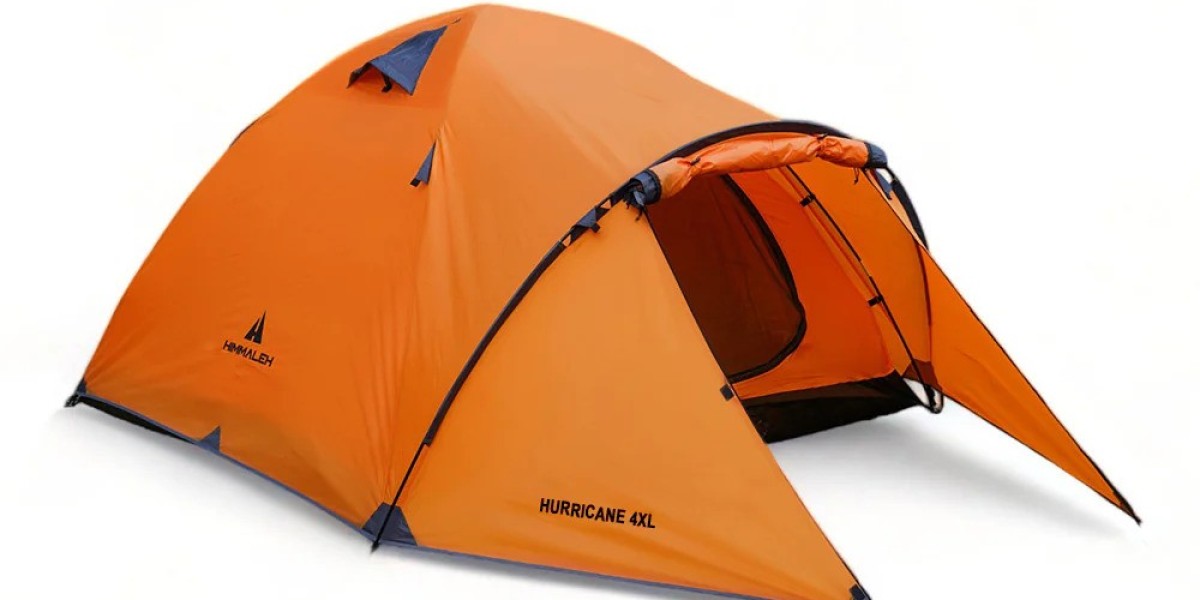A peaceful night under the stars can turn into a challenge when the wind howls through the mountains. If you’ve ever been caught in a windstorm while camping, you know the real test of any trekking tent lies in its ability to stay upright and keep you safe. Stability in strong winds is not just a bonus—it’s a necessity.
Whether you're camping in high altitudes, on exposed ridges, or by a breezy lakeside, your trekking tent should be your reliable shelter. In this blog, we’ll break down what makes a trekking tent stable, how wind affects its performance, and what you can do to improve its holding power.
Why Stability Matters in a Trekking Tent
The number one purpose of a trekking tent is to protect you from the elements. Wind is one of the most unpredictable forces in nature. A strong gust can:
- Collapse poorly pitched tents
- Snap weak poles
- Tear fabric and zippers
- Send unsecured tents flying down slopes
A stable trekking tent ensures safety, warmth, and peace of mind. It helps prevent gear damage and gives you uninterrupted rest during your adventures.
How Wind Affects a Trekking Tent
Wind interacts with your trekking tent in different ways depending on its speed, direction, and the terrain. Some key effects include:
1. Pressure on Fabric and Poles
High winds can push the walls of your trekking tent inward or outward, depending on the angle of attack. This pressure can bend or break poles if the structure isn’t strong enough.
2. Flapping and Noise
Constant wind creates annoying flapping sounds. If your trekking tent fabric isn’t tensioned properly, it can feel like sleeping inside a drum.
3. Ground Pull and Lift
Wind can tug at the base of the trekking tent, trying to lift it. A poorly anchored tent may start to move—even with you inside it.
Design Features That Improve Tent Stability
When shopping for or evaluating your trekking tent, pay attention to these features that can enhance wind resistance:
● Low Profile Shape
The taller the trekking tent, the more it acts like a sail. A low-profile tent reduces the surface area exposed to the wind.
● Aerodynamic Structure
Dome and geodesic shapes allow wind to flow around the trekking tent instead of slamming into a flat surface.
● Strong Pole System
Aluminum or high-strength alloy poles provide better support and flexibility. More crossing points between poles make the trekking tent sturdier.
● Multiple Guyline Points
Guylines help anchor the trekking tent from all sides. The more anchoring points, the more balanced it remains under pressure.
● Reinforced Fabric and Seams
Durable material helps your trekking tent resist tearing. Reinforced seams prevent rips from spreading during a wind gust.
How to Set Up Your Trekking Tent for Windy Conditions
Even the best-designed trekking tent needs proper pitching for maximum performance. Here’s how to make sure yours holds strong:
1. Pick a Sheltered Location
Avoid ridges or open plains. Look for natural barriers like rocks, shrubs, or land dips that block or redirect wind.
2. Pitch with the Narrow End Facing the Wind
Let the wind hit the narrowest part of your trekking tent. This reduces pressure and improves airflow.
3. Use All Guylines and Stakes
Even if the weather seems calm, use every anchor point your trekking tent offers. Winds can change quickly.
4. Double-Stake in Loose Soil
If you’re camping in sand, snow, or soft ground, use longer stakes or double them at different angles for better grip.
5. Tighten the Tent Fabric
Loose fabric catches wind. Keep all sides tensioned evenly to reduce flapping and strain on zippers and seams.
Wind Speed and Tent Performance: What’s the Limit?
So, how much wind can a trekking tent handle?
- Moderate Winds (15–25 km/h): Most trekking tents perform well.
- Strong Winds (25–40 km/h): You need a well-anchored, dome-style trekking tent with guyline support.
- Gale Force Winds (40+ km/h): Only specialized 4-season trekking tents with strong poles and full anchoring systems should be trusted.
It’s important to know your limits. If wind conditions are beyond your trekking tent’s rating, the safest option might be to delay your trip or find natural shelter.
Real-World Trekker Tips for Windproof Camping
- Carry extra guylines and stakes: Not all sites offer perfect ground for anchoring.
- Use rocks or snow as extra anchors: When in doubt, pile up natural weight around your trekking tent base.
- Check forecast and wind direction: Apps and local advice can help you pitch wisely.
- Pack a repair kit: Duct tape, fabric patches, and spare cords can save your night.
Conclusion: Is Your Trekking Tent Ready for the Wind?
A windstorm doesn’t have to ruin your adventure. With the right planning, setup, and design, your trekking tent can stand firm when the wind blows hard.
Before heading out, take time to test your setup. Learn your trekking tent’s weak points and adjust accordingly. Remember, nature doesn’t wait. Wind-proofing your trekking tent isn’t just about comfort—it’s about safety, confidence, and enjoying every moment outdoors.
✅ Key Takeaways
- A stable trekking tent is essential for wind protection.
- Choose aerodynamic shapes, strong poles, and secure guyline systems.
- Setup and campsite selection matter as much as the tent design.
- Always prepare for unexpected weather shifts on your trekking route.


